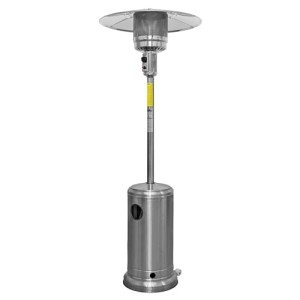10 Unexpected Efficient Heaters Tips
The Comprehensive Guide to Gas Patio Heaters
As outdoor living becomes significantly popular, gas patio heaters have emerged as a vital element for extending the outdoor entertaining season. Whether for a comfortable night with buddies or a vibrant household gathering, these heaters provide heat and convenience that can change any outdoor space. This article checks out the numerous aspects of gas patio heaters, including their types, benefits, operational mechanics, maintenance suggestions, and considerations for acquiring one.
What is a Gas Patio Heater?
A gas patio heater is a kind of heating home appliance created particularly for outdoor usage. Typically sustained by propane or gas, these heaters produce heat to fight the chill of the evening air, enabling outdoor social activities to continue even under cooler temperature levels.
Kinds Of Gas Patio Heaters
Gas patio heaters can be found in a number of different designs, each suited for various needs and aesthetics. The common types consist of:
Freestanding Heaters:
- These are the most typical type and are generally tall, with a broad base and a heater aspect at the top.
- They can easily be moved and appropriate for different outdoor settings.
Tabletop Heaters:
- Smaller and more compact, tabletop heaters are developed to rest on tables or other surface areas.
- They offer heat for smaller sized areas and are generally easier to store.
Wall-Mounted Heaters:
- These are fixed to a wall and are an excellent alternative for patio areas with minimal space.
- They offer a more irreversible heating solution and can complement outdoor decoration.
Patio Fire Pits:
- While not solely heaters, gas fire pits offer heat and ambiance concurrently.
- They can act as a focal point for outdoor gatherings.
Heater Type
Description
Best For
Freestanding
Tall, mobile units with a heating aspect on leading
Large open locations
Tabletop
Compact models ideal for table surface areas
Small gatherings
Wall-Mounted
Fixed units supplying consistent warmth
Smaller sized patios
Patio Fire Pits
Integrated heating and decorative function
Ambiance and heat
Advantages of Gas Patio Heaters
Buying a gas patio heater offers numerous advantages:
- Extended Outdoor Enjoyment: Gas heaters enable property owners to enjoy their patio areas even during cooler months.
- Quick Heating Capability: Gas heaters heat up quickly, supplying instant relief from the chill.
- User-Friendly Operation: Most gas heaters feature basic ignition controls for ease of use.
- Aesthetic Appeal: Many gas heaters are designed to be visually attractive, enhancing the overall appearance of your outdoor space.
- Flexible Fuel Options: Availability of both propane and gas designs caters to numerous needs and preferences.
Functional Mechanics
Gas patio heaters operate by transforming fuel into radiant heat. Here's a streamlined breakdown of how they work:
- Fuel Source: Most gas heaters use propane or gas. The kind of fuel affects efficiency and availability.
- Ignition System: Most models feature either a manual ignition (using a lighter or match) or an electronic ignition (push-button).
- Heating Element: Once sparked, gas flows through a burner, where it is combusted to create heat. Convected heat spreads from the heating element.
- Heat Diffuser: Some heaters have a reflector to assist distribute warmth more evenly throughout a wider location.
Fuel Comparison
Fuel Type
Pros
Cons
Propane
Portable, extensively readily available
Needs tank replacement/refill
Gas
Economical if linked to a supply
Setup more complicated
Upkeep Tips for Gas Patio Heaters
Correct care will extend the life of gas patio heaters. Here are some necessary maintenance tips:
- Regular Cleaning: Keep the heater tidy from dirt and debris. Regularly clean down the surfaces.
- Inspect Gas Supply Lines: Check for leakages or fractures in the gas lines. Use soapy water to find leaks by observing bubbles.
- Seasonal Checks: Before the use of a heater, examine all elements and repair work or change any broken parts.
- Storage: During off-seasons, store the heater in a dry location or cover it for defense.
- Expert Servicing: Consider a professional check-up each year, especially for natural gas designs.
Considerations When Purchasing a Gas Patio Heater
When choosing a gas patio heater, keep the following consider mind:
- Heating Capacity:
- Measured in BTUs, a greater BTU score supplies more heat.
- Size and Weight:
- Depending on the space available and whether the heater needs to be portable.
- Product:
- Stainless steel heaters provide durability and resistance to rust and deterioration.
- Design:
- Choose a style that complements your outdoor decoration.
- Security Features:
- Look for automated shut-off features or security tilt valves to avoid mishaps.
FAQs
Q: Are gas patio heaters safe to use?A: Yes
, when used according to the manufacturer's directions and safety standards, gas patio heaters are safe. Constantly make sure proper ventilation.
Q: How long can one propane tank last?A: A standard 20 pound
propane tank can last anywhere from 8 to 30 hours, depending upon the heat setting. Q: Can gas patio heaters be used indoors?A: No,
**gas patio heaters are designed for outdoor use only due to the danger of carbon monoxide accumulation in enclosed spaces. Q: Do gas patio heaters require assembly?A: Most freestanding models require fundamental assembly
, while tabletop and wall-mounted options might require more
specific assembly. find more are an appealing solution for those looking to enhance their outdoor experiences throughout the year.
By comprehending the different types, benefits, and functional mechanics, possible buyers can make educated decisions that line up with their needs. Appropriate upkeep and security factors to consider will ensure that these heaters stay effective and safe, providing comfort to outdoor gatherings for many seasons to come. With mindful selection and care, a gas patio heater can end up being a precious addition to any outdoor living space.  **
**